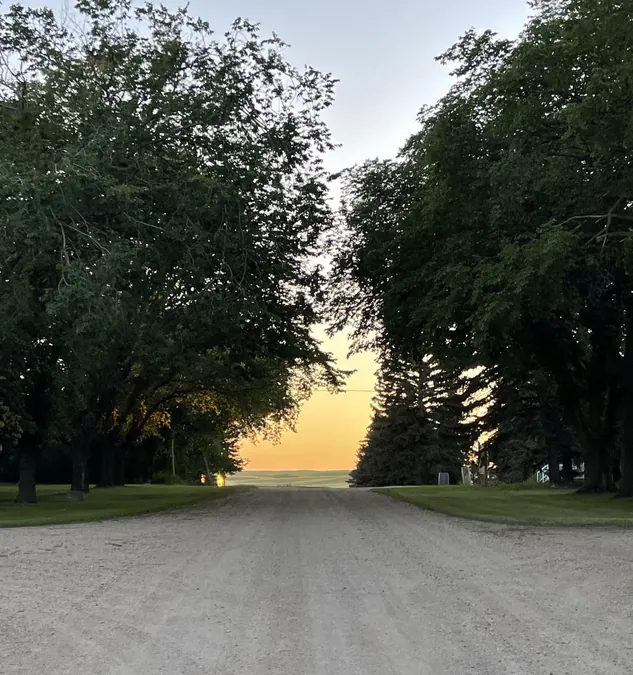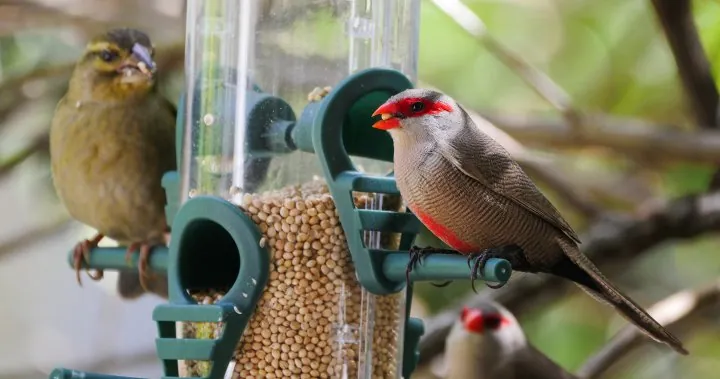
Spring Awakening: Saskatchewan's Native Flora Flourishes as Winter Wanes
2025-03-24
Author: Jacob
Introduction
As spring officially takes its cue, Saskatchewan is shedding the frost of a long, harsh winter and awakening to vibrant life once again. This shift in seasons heralds a remarkable transformation visible across the province, particularly among its diverse array of plant and animal species.
Resurgence of Native Plants
One of the most striking features of this seasonal change is the resurgence of native plants, impeccably adapted to withstand Saskatchewan's volatile weather fluctuations. Beth Dolmage, a dedicated Species at Risk Botanist with the Ministry of Environment, offers insights into what to watch for as the province blooms anew.
“Among the earliest signs of spring are our beloved Prairie Crocuses and other early-blooming plants such as Prairie Smoke, known for its unique purple and red flowers, and the delicate Moss Phlox,” Dolmage shared, encouraging residents to take notice. “We also see the first buds on shrubs like Pussy Willows and trees such as Balsam Poplar.”
These resilient native plants emerge early, well-equipped to handle Saskatchewan’s notorious temperature swings typical of late winter and early spring. The Prairie Crocus, for instance, is adorned with fine hairs that serve to conserve moisture and provide a protective barrier against sudden cold snaps, showcasing their remarkable adaptability to the harsh climate.
Timing and Risks
Timing is critical for Saskatchewan's flora and fauna. Many native animals hibernate, using this time to survive the winter, while the plant species utilize a similar strategy. Dolmage emphasizes the risks associated with premature budding. “If plants bloom too early and then are hit by frosts, they expend vital energy to recover, which can threaten their survival,” she explained, noting that early April is typically when crocuses make their appearance.
Ecoregions and Biodiversity
Saskatchewan's biodiversity thrives due to its varied ecosystems, with unique ecoregions that present distinct challenges and opportunities for plant life. “In this province, we have a fascinating array of ecoregions, from the aspen parkland to mixed moist grasslands, each contributing to the rich tapestry of our native flora. Our plants have evolved over millennia to not only adapt to our diverse climates but also to thrive in various soil types shaped by the history of glaciation,” Dolmage added.
In response to the demanding conditions found in drier areas, some native plants exhibit adaptations like silvery leaves that reflect sunlight, conserving precious moisture from harsh evaporation. Additionally, native grasses that follow a unique growth pattern known as C4 photosynthesis delay their emergence until late summer, strategically reducing competition for resources.
Personal Insights
Throughout her career, Dolmage has traversed Saskatchewan, studying its plants and developing a personal fondness for certain species. “Our provincial flower, the Wood Lily, is a favorite of mine for its brilliant orange blooms,” she explained. “Another gem is the Showy Locoweed, a soft plant resembling the Prairie Crocus, with lush purple flowers that add a splash of beauty to our native prairies.”
Encouragement to Explore
As the growing season approaches, Dolmage invites everyone to embrace the great outdoors and explore their surroundings. The iNaturalist app comes highly recommended for those wanting to engage with nature, as it allows users to document plants and animals and connect with a global network of experts for identification and verification.
“You have the chance to discover and learn about the incredible diversity around you. Take a walk, snap some photos, and see what you might find,” she encourages.
Conservation Efforts
Individuals looking to contribute to conservation efforts can explore ways to integrate native plants into their gardens, enhancing both local biodiversity and aesthetic appeal. Dolmage suggests, “Think about planting a native garden. Many local groups collect native seeds, and there are fantastic resources available for those interested in creating pollinator gardens.”
To further assist in the preservation of Saskatchewan's native flora, individuals are encouraged to engage with conservation organizations to learn how they might play a role in protecting these vital ecosystems. The season of renewal is here, and with it comes the opportunity to foster a deeper connection with the natural world.









 Brasil (PT)
Brasil (PT)
 Canada (EN)
Canada (EN)
 Chile (ES)
Chile (ES)
 Česko (CS)
Česko (CS)
 대한민국 (KO)
대한민국 (KO)
 España (ES)
España (ES)
 France (FR)
France (FR)
 Hong Kong (EN)
Hong Kong (EN)
 Italia (IT)
Italia (IT)
 日本 (JA)
日本 (JA)
 Magyarország (HU)
Magyarország (HU)
 Norge (NO)
Norge (NO)
 Polska (PL)
Polska (PL)
 Schweiz (DE)
Schweiz (DE)
 Singapore (EN)
Singapore (EN)
 Sverige (SV)
Sverige (SV)
 Suomi (FI)
Suomi (FI)
 Türkiye (TR)
Türkiye (TR)
 الإمارات العربية المتحدة (AR)
الإمارات العربية المتحدة (AR)